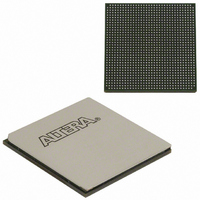EP3SL150F1152C3N Altera, EP3SL150F1152C3N Datasheet - Page 118

EP3SL150F1152C3N
Manufacturer Part Number
EP3SL150F1152C3N
Description
IC STRATX III FPGA 150K 1152FBGA
Manufacturer
Altera
Series
Stratix® IIIr
Datasheets
1.EP3SL150F780C4N.pdf
(16 pages)
2.EP3SL150F780C4N.pdf
(332 pages)
3.EP3SL150F780C4N.pdf
(456 pages)
Specifications of EP3SL150F1152C3N
Number Of Logic Elements/cells
142500
Number Of Labs/clbs
5700
Total Ram Bits
6390
Number Of I /o
744
Voltage - Supply
0.86 V ~ 1.15 V
Mounting Type
Surface Mount
Operating Temperature
0°C ~ 85°C
Package / Case
1152-FBGA
For Use With
544-2568 - KIT DEVELOPMENT STRATIX III
Lead Free Status / RoHS Status
Lead free / RoHS Compliant
Number Of Gates
-
Other names
544-2408
EP3SL150F1152C3NES
EP3SL150F1152C3NES
Available stocks
Company
Part Number
Manufacturer
Quantity
Price
Company:
Part Number:
EP3SL150F1152C3N
Manufacturer:
ALTERA
Quantity:
490
- Current page: 118 of 456
- Download datasheet (7Mb)
5–12
Multiplier and First-Stage Adder
Stratix III Device Handbook, Volume 1
Shift registers are useful in DSP functions such as FIR filters. When implementing
18 × 18 or smaller width multipliers, you do not need external logic to create the shift
register chain because the input shift registers are internal to the DSP block. This
implementation significantly reduces the logical element (LE) resources required,
avoids routing congestion, and results in predictable timing.
The first multiplier in every half DSP block (top- and bottom-half) in Stratix III
devices has a multiplexer for the first multiplier B-input (lower-leg input) register to
select between general routing and loopback, as shown in
mode, the most significant 18-bit registered outputs are connected as feedback to the
multiplier input of the first top multiplier in each half DSP block. Loopback modes are
used by recursive filters where the previous output is needed to compute the current
output.
The loopback mode is described in detail in
page
Table 5–3
Table 5–3. Input Register Modes
The multiplier stage natively supports 9 × 9, 12 × 12, 18 × 18, or 36 × 36 multipliers.
Other wordlengths are padded up to the nearest appropriate native wordlength; for
example, 16 × 16 would be padded up to use 18 × 18. Refer to
Multiplier Modes” on page 5–15
multiplier, a single DSP block can perform many multiplications in parallel.
Each multiplier operand can be a unique signed or unsigned number. Two dynamic
signals, signa and signb, control the representation of each operand, respectively. A
logic 1 value on the signa/signb signal indicates that data A/data B is a
signed number; a logic 0 value indicates an unsigned number.
sign of the multiplication result for the various operand sign representations. The
result of the multiplication is signed if any one of the operands is a signed value.
Table 5–4. Multiplier Sign Representation
Parallel input
Shift register input
Loopback input
Notes to
(1) The multiplier operand input wordlengths are statically configured at compile time.
(2) Available only on the A-operand.
(3) Only one loopback input is allowed per Half-Block. See
Register Input Mode
Unsigned (logic 0)
Unsigned (logic 0)
5–21.
Signed (logic 1)
Signed (logic 1)
Table
(signa Value)
lists the input register modes for the DSP block.
Data A
5–3:
(3)
(2)
(1)
9 × 9
v
—
—
for more details. Depending on the data width of the
Unsigned (logic 0)
Unsigned (logic 0)
Signed (logic 1)
Signed (logic 1)
(signb Value)
Data B
12 × 12
v
—
—
Figure 5–15
“Two-Multiplier Adder Sum Mode” on
18 × 18
for details.
Chapter 5: DSP Blocks in Stratix III Devices
v
v
v
Figure
© March 2010 Altera Corporation
DSP Block Resource Descriptions
“Independent
36 × 36
5–6. In loopback
Table 5–4
v
—
—
Unsigned
Signed
Signed
Signed
Result
lists the
Double
v
—
—
Related parts for EP3SL150F1152C3N
Image
Part Number
Description
Manufacturer
Datasheet
Request
R

Part Number:
Description:
CYCLONE II STARTER KIT EP2C20N
Manufacturer:
Altera
Datasheet:

Part Number:
Description:
CPLD, EP610 Family, ECMOS Process, 300 Gates, 16 Macro Cells, 16 Reg., 16 User I/Os, 5V Supply, 35 Speed Grade, 24DIP
Manufacturer:
Altera Corporation
Datasheet:

Part Number:
Description:
CPLD, EP610 Family, ECMOS Process, 300 Gates, 16 Macro Cells, 16 Reg., 16 User I/Os, 5V Supply, 15 Speed Grade, 24DIP
Manufacturer:
Altera Corporation
Datasheet:

Part Number:
Description:
Manufacturer:
Altera Corporation
Datasheet:

Part Number:
Description:
CPLD, EP610 Family, ECMOS Process, 300 Gates, 16 Macro Cells, 16 Reg., 16 User I/Os, 5V Supply, 30 Speed Grade, 24DIP
Manufacturer:
Altera Corporation
Datasheet:

Part Number:
Description:
High-performance, low-power erasable programmable logic devices with 8 macrocells, 10ns
Manufacturer:
Altera Corporation
Datasheet:

Part Number:
Description:
High-performance, low-power erasable programmable logic devices with 8 macrocells, 7ns
Manufacturer:
Altera Corporation
Datasheet:

Part Number:
Description:
Classic EPLD
Manufacturer:
Altera Corporation
Datasheet:

Part Number:
Description:
High-performance, low-power erasable programmable logic devices with 8 macrocells, 10ns
Manufacturer:
Altera Corporation
Datasheet:

Part Number:
Description:
Manufacturer:
Altera Corporation
Datasheet:

Part Number:
Description:
Manufacturer:
Altera Corporation
Datasheet:

Part Number:
Description:
Manufacturer:
Altera Corporation
Datasheet:

Part Number:
Description:
CPLD, EP610 Family, ECMOS Process, 300 Gates, 16 Macro Cells, 16 Reg., 16 User I/Os, 5V Supply, 25 Speed Grade, 24DIP
Manufacturer:
Altera Corporation
Datasheet:












